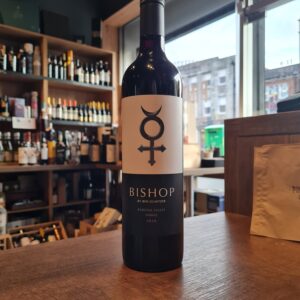-
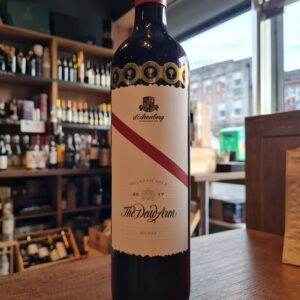 The Dead Arm is d’Arenberg’s flagship Shiraz and takes its name from a vine disease that kills off one “arm” of the plant while the other side of the vine produces remarkably intense and delicious fruit. The grapes for this bottling come from low yielding old vines on the estate which are harvested in small parcels and vinified plot by plot to give maximum control over the blending. Established in 1912, d’Arenberg is one of the McLaren Vale’s most iconic wineries which boasts some extremely old Shiraz vines planted back in the 1880s. The estate’s chief winemaker is Chester Osborn, the great-grandson of d’Arenberg’s original founder Joseph Rowe Osborn who was actually a teetotaler who used to sell his grapes on to local wineries. Powerful and ageworthy wine with firm tannins and a well-developed structure that will respond well another couple of decade or so in the cellar. Pair with hearty red meat dishes if you’d prefer to enjoy it now.
The Dead Arm is d’Arenberg’s flagship Shiraz and takes its name from a vine disease that kills off one “arm” of the plant while the other side of the vine produces remarkably intense and delicious fruit. The grapes for this bottling come from low yielding old vines on the estate which are harvested in small parcels and vinified plot by plot to give maximum control over the blending. Established in 1912, d’Arenberg is one of the McLaren Vale’s most iconic wineries which boasts some extremely old Shiraz vines planted back in the 1880s. The estate’s chief winemaker is Chester Osborn, the great-grandson of d’Arenberg’s original founder Joseph Rowe Osborn who was actually a teetotaler who used to sell his grapes on to local wineries. Powerful and ageworthy wine with firm tannins and a well-developed structure that will respond well another couple of decade or so in the cellar. Pair with hearty red meat dishes if you’d prefer to enjoy it now. -
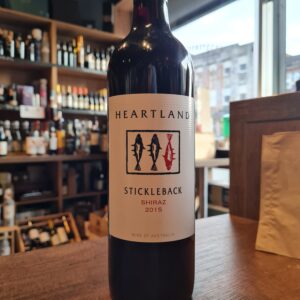 The first Glaetzers settled in the Barossa Valley in 1888 after emigrating from Brandenburg, Germany. The family left Germany on board the Nord-Deutscher Lloyd steamer “Habsburg” and took seven weeks to reach their final destination of Port Adelaide. From here they settled in a country town called Nuriootpa in the Barossa Valley where they started their new life in Australia. The family were some of the earliest recorded viticulturalists in the Barossa Valley and Clare Valley. Barossa Vintners was the first of its kind to conceive as a state-of-the-art winemaking facility with the capacity to make wines, for a core group of top end producers whose fame and demand had grown beyond their winemaking capacities. Completed in 1995, Barossa Vintners has been developed make wines in the most natural possible way. The natural slope of the land allows the winery to be gravity fed and avoid harsh pumping of the grapes and juice. The solar panels allow them to minimize carbon footprint and keep the power bills down. Ben Glaetzer makes wines for his family brand plus Mitolo in McLaren Vale and the Heartland wines from Langhorne Creek. Stickleback is Heartland's entry-level red. Perfect for an evening in front of the chimney , Party , Picknick or a barbecue. Pair it with hearty dishes , spicy food
The first Glaetzers settled in the Barossa Valley in 1888 after emigrating from Brandenburg, Germany. The family left Germany on board the Nord-Deutscher Lloyd steamer “Habsburg” and took seven weeks to reach their final destination of Port Adelaide. From here they settled in a country town called Nuriootpa in the Barossa Valley where they started their new life in Australia. The family were some of the earliest recorded viticulturalists in the Barossa Valley and Clare Valley. Barossa Vintners was the first of its kind to conceive as a state-of-the-art winemaking facility with the capacity to make wines, for a core group of top end producers whose fame and demand had grown beyond their winemaking capacities. Completed in 1995, Barossa Vintners has been developed make wines in the most natural possible way. The natural slope of the land allows the winery to be gravity fed and avoid harsh pumping of the grapes and juice. The solar panels allow them to minimize carbon footprint and keep the power bills down. Ben Glaetzer makes wines for his family brand plus Mitolo in McLaren Vale and the Heartland wines from Langhorne Creek. Stickleback is Heartland's entry-level red. Perfect for an evening in front of the chimney , Party , Picknick or a barbecue. Pair it with hearty dishes , spicy food -
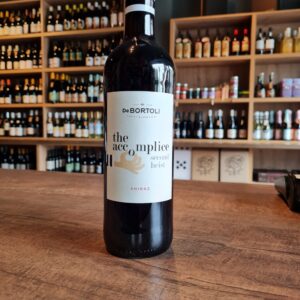 The Shiraz grapes used to craft this youthful wine were harvested in early January, which proved to be a slightly dry season. This elegant De Bortoli The Accomplice Shiraz features a dark crimson colour with ruby highlights throughout the wine. The attractive nose offers fragrances of cherry and raspberry with subtle hints of spice and musk lurking in the background. The sweet and intense palate packs juicy flavours of berry fruit combined with vanilla and nutty oak, and balanced by subtle spicy notes. This medium bodied Shiraz can be cellared for a brief term of 24 months to discover its full flavour potential. It tastes marvellous with pasta, braised pork belly and beef fajitas with salsa.Easy to drink. Enjoy!
The Shiraz grapes used to craft this youthful wine were harvested in early January, which proved to be a slightly dry season. This elegant De Bortoli The Accomplice Shiraz features a dark crimson colour with ruby highlights throughout the wine. The attractive nose offers fragrances of cherry and raspberry with subtle hints of spice and musk lurking in the background. The sweet and intense palate packs juicy flavours of berry fruit combined with vanilla and nutty oak, and balanced by subtle spicy notes. This medium bodied Shiraz can be cellared for a brief term of 24 months to discover its full flavour potential. It tastes marvellous with pasta, braised pork belly and beef fajitas with salsa.Easy to drink. Enjoy! -
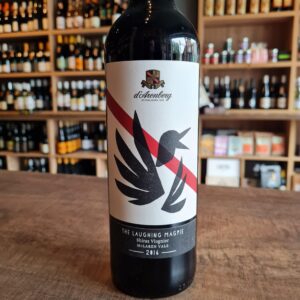 The Kookaburra is a native Australian bird famous for its distinctive laughing call, Chester's young daughters named them 'Laughing Magpies'. The Magpie plumage is black with a stripe of white feathers, representing McLaren Vale's first ever blend combining the (black) Shiraz and its white partner, Viognier. An enticing mix of primary fruit characters entwined with flowers, ginger and stone fruit. A rather dark appearance with a vivid purple hue suggesting a complex dry red. The nose is particularly intense, with peppery spice, hints of fragrant flower and perfume aromas, plus nectarines, apricots, ginger and herbs from the small parcel of viognier that the Shiraz is co-fermented with. On the palate the Shiraz is more dominant. There is some sweeter fruit characters like blackberry, blueberry and boysenberry. The palate is rich and generous and soft silky tannins. Would open 2 hours before serving and use a Decanter when possible. Enjoy this dry red wine from Australia with fillet of beef, dark meat dishes like goulash or the Asian classic Peking duck.
The Kookaburra is a native Australian bird famous for its distinctive laughing call, Chester's young daughters named them 'Laughing Magpies'. The Magpie plumage is black with a stripe of white feathers, representing McLaren Vale's first ever blend combining the (black) Shiraz and its white partner, Viognier. An enticing mix of primary fruit characters entwined with flowers, ginger and stone fruit. A rather dark appearance with a vivid purple hue suggesting a complex dry red. The nose is particularly intense, with peppery spice, hints of fragrant flower and perfume aromas, plus nectarines, apricots, ginger and herbs from the small parcel of viognier that the Shiraz is co-fermented with. On the palate the Shiraz is more dominant. There is some sweeter fruit characters like blackberry, blueberry and boysenberry. The palate is rich and generous and soft silky tannins. Would open 2 hours before serving and use a Decanter when possible. Enjoy this dry red wine from Australia with fillet of beef, dark meat dishes like goulash or the Asian classic Peking duck. -
Out of stock
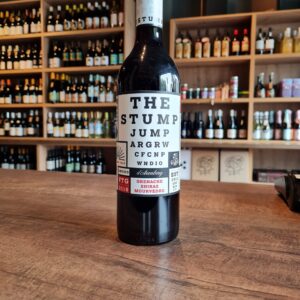 All three varieties play an important role - the Shiraz offers dark plum fruits, mulberries and licorice with plenty of concentration, depth and velvety tannin. The Grenache adds a lovely lusciousness to the wine with raspberry, blueberry and floral notes. Finally, the Mourvédre provides lovely red fruits with a hint of dried herb and importantly, a fine chalky tannin that carries all these characters to a long and wonderfully moreish finish.The fruit weight and silkyness means this wine can be enjoyed now, but it will keep developing over time. This wine screams value, recommended with hard cheeses and red meats.
All three varieties play an important role - the Shiraz offers dark plum fruits, mulberries and licorice with plenty of concentration, depth and velvety tannin. The Grenache adds a lovely lusciousness to the wine with raspberry, blueberry and floral notes. Finally, the Mourvédre provides lovely red fruits with a hint of dried herb and importantly, a fine chalky tannin that carries all these characters to a long and wonderfully moreish finish.The fruit weight and silkyness means this wine can be enjoyed now, but it will keep developing over time. This wine screams value, recommended with hard cheeses and red meats.


